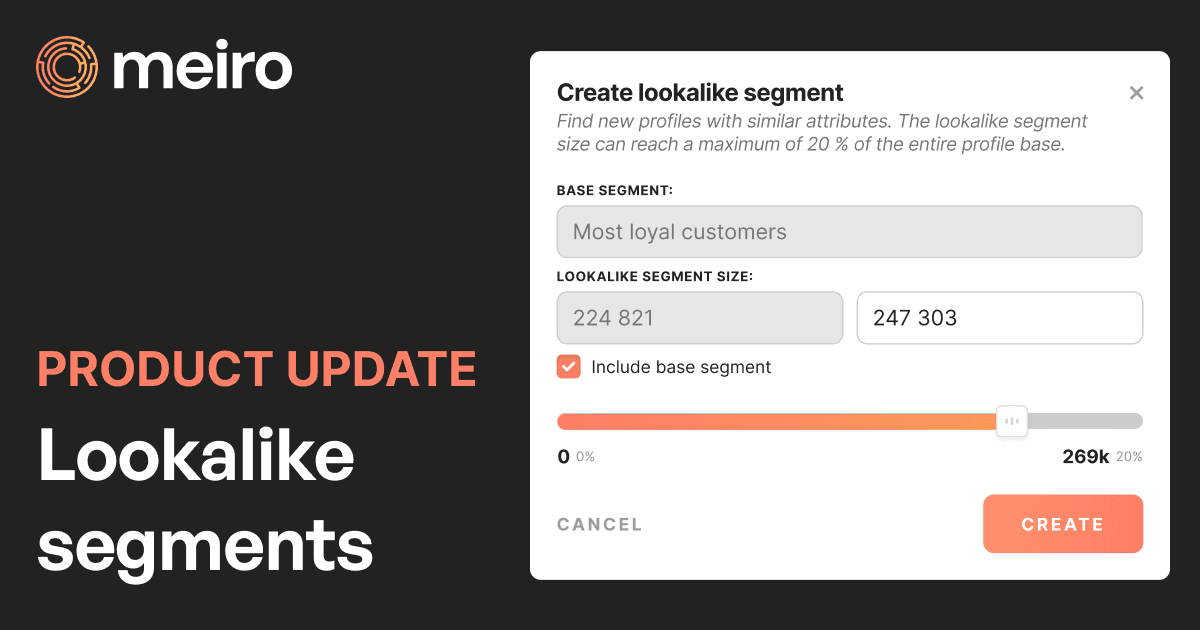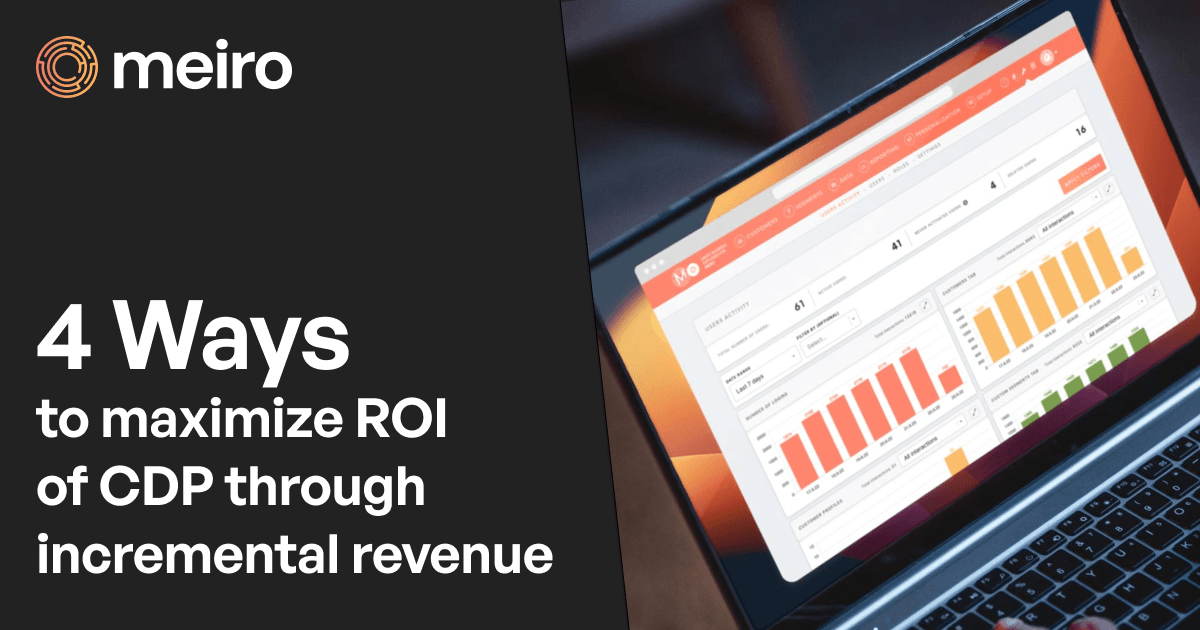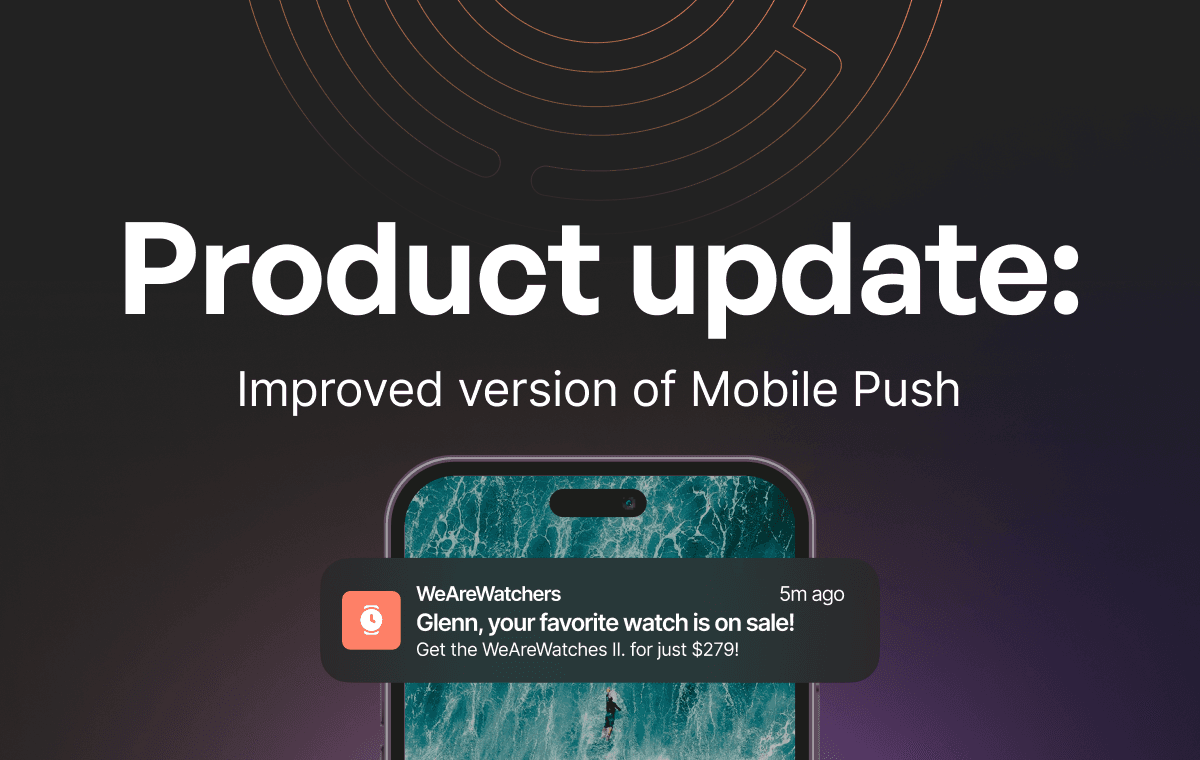Case study: How a CPG brand solved the third-party cookie problem
This is last part of a three-part blog series that covers all that you need to know about cookies and the third-party cookie ban titled “Cookies 101: Bulletproofing for the 3rd party cookie ban”.

CPO | Co-Founder
This is part of a three-part blog series that covers all that you need to know about cookies and the third-party cookie ban titled “Cookies 101: Bulletproofing for the 3rd party cookie ban”. In this last part of the series, we have Harish from Ameex share a case study on how their client, a Consumer Packaged Goods (CPG) brand, solved their third-party cookie problems (you can watch the full recording here). It talks about how 80% of their audience was based on third-party cookies, how they saw a dip in their ad performance, why they stopped using a DMP and used a CDP, and how they solved it with a Direct to Consumer (D2C) strategy & first-party data collection. You can watch the video above or read the transcription below.
See the other 2 blog post to this series:
- How does the web cookies work & The future of third party cookies
- Link to how Meiro CDP solves the third-party cookie problem
Our other relevant cookie-related blog posts
Harish & Ameex intro
I'm Harish Rajendran and I'm a data scientist, my primary focus is on marketing analytics, attribution, and data strategies. So to start with maybe one slide around Ameex who we are, and we are an IT services company. We are a 600 members strong company started in 2007, mostly on custom application developments. We grew with our clients, we developed our services based on our customer needs. In 2010 did we start building mobile applications and E-commerce when it was in the starting stage. Then in 2012, we moved into marketing analytics and user experiences. By 2017, we started venturing into Artificial Intelligence (AI) and Machine Learning (ML) capabilities with chatbots, personalization, and marketing automation. Now, every company is embarking on their journey to digital transformation, they wanted to build data strategies, they wanted to increase data collection. So that's when we started doing data strategies and CDP-related services.
Intro to Ameex’s CPG brand cookie case study
I wanted to start off with a case study that is more business-centric. So as a business, you know that the third-party cookie deprecation is happening, lots of changes are happening in privacy data collections. So how as a brand, do you navigate all these changes? In this case study, I wanted to share about one of our largest Consumer Packaged Goods (CPG ) clients focusing on their baby formula nutrition brand. I will cover how they navigate this journey, how we start with them in 201, how they evolved, and where they are now today. In 2019, as a traditional Consumer Packaged Goods (CPG ) company, 80% of their purchase marketing budget went towards display ads, search ads, and YouTube. They are a Google marketing platforms shop and 20% of their marketing spend went towards Facebook ads. I also wanted to tell how the business looked at them, like what are the objectives of the business. And what are the audiences they were using to target and how strong were they with resources. So if you see on the right side, the objective so as a Consumer Packaged Goods (CPG ), client, 60% of their marketing went towards brand awareness, and 20% towards retail sales. Because as a Consumer Packaged Goods (CPG ) company, most of your sales happen in retail stores. So very little happened on the e-commerce website. So 20% of their targeting was towards like go and buy Walmart owned by Costco, ask that kind of messaging 10% of their marketing spend went towards website engagement. So come to our website, learn about our products, something like that, and 10% towards our T to see. So we have a website, you can come and buy your products. So we really see the mixes more towards brand awareness and retail space.
80% of the CPG brand’s audience were based off 3rd party cookies
And in terms of audiences, 80% of their audiences were third-party, second-party audiences. So what do you mean by a third-party audience? It's like you buy data from outside. So we know that we are product A and our competitors are product B and C. So we just wanted data from outside third-party vendors who sell data that purchases of brand B and purchases of brand C. So we wanted to lure them into buying our product. So we buy data from outside. So these are all third-party data.
So how do you target them? It's completely based on third-party cookies. So you target them when they go to the open web. Using this third-party cookie as mentioned the double click cookie. And then 50% of the audiences were retargeting because they are a very minimal first-party data strategy and very little traffic to the website. Very few sales on their website. So their retargeting pool was very little, and 5% on one. So whatever data collection you have, are very minimal enrollments. And the mix of audiences was just only 5%. And by 2019, the first-party data sources were mostly website enrollments. They are a very minimal website with good content, but they were not encouraging them to enroll sort of was very minimal enrollments. And they had very minimal purchases.
So we really see when if one suddenly by 2023 third-party cookies deprecated you know that 80% of their audiences non-targetable. And they have a DMP strategy too because they are showing lots of ads to different people. They wanted to raise the frequency they wanted to do suppression, audience suppression audience management because they wanted to want to bombard them with ads. So they were using Salesforce Crux DMP. And with all these three deprecations the DMP is going to be a bit complex.
You should read this: The benefits of CDP vs DMP
Their display ads were not working well in 2019
So in the next slide, I also listed out what were the challenges in 2019. So as I said, 80% of the marketing budget was towards display ads. The traffic that is coming from display ads was not of good quality 50 or more bounce rates. So it starts to look like you are not reaching the right people, maybe the cookies are not functioning well. So you are just spreading too thin and you're giving messages to different people. And with all with everybody using mobile, your thumbs are too fat. So sometimes you click on ads that you are not meant to. And it starts loading. So the traffic was becoming less quality. And cookie duplication was real. And there were a lot of internal discussions on how we are going to manage three audiences how we are going to manage all these 80% of the display. And they also had a very minimal one. And as a service provider, we definitely were in conversation with them about how to develop their first-party data strategy, and they wanted to just switch out the DMP soon.
They wanted to move away from DMPs
So maybe by 2020, they wanted to phase out the DMP. And they were not finding good value with DMP. And retargeting is also going to be a key. So if you're going to retarget, mostly relying on your third-party cookies, maybe you're not showing them the right message. So somebody has enrolled, and you are again, showing them as a new user, please come to our website. So he will be getting the same message as a new user, but he has already enrolled on your website. So that's a waste of money. And also, they had very minimal sales on their website. So they are only 500K. So this is a US brand. So we have 500K sales and it was 0.1% of their overall sales. So very few sales have very little data. So there was no value proposition for customers to come to the website. So why should?
They implemented a D2C strategy
So in 2020, obviously, the realisation has happened, okay, the three people in scoring. So we have their budget composition has changed. So they've pushed 20% out of their display ads into social media ads. And they also came up with the D2C strategy where they wanted to build their shop with Shopify with advanced features. And we also help them build a mobile app because since it's the baby nutrition brand, moms are the main target. So we wanted to create an app where moms can directly go and access content and they wanted to come up with a good SFMC strategy where they can build email marketing, and also a social influencer program. So I know it is walled gardens it gets really difficult. So now you want to create your own influencer program where you can target the people. So yeah, so the objectives, if you've seen it really in 2020 have suddenly changed. So now brand awareness is no longer the primary thing.
So you wanted to emphasize more on website engagement, you want to improve your B2C sales, and they want more enrollments. And they also wanted to do content personalization. And also in terms of audiences, with all the third-part data duplications, they wanted to reduce the reliance on first-party data audiences. So since we have started collecting first-party data, they wanted to do a good retargeting strategy around first-party data, and since they are a Google marketing platform shop, they wanted to integrate all the channels and will those profiles. So by the time by 2020, if you see the first-party data sources that are already there, so they have started to build a good enrollment program in their websites, and they have built a good Shopify D2C set up where the most sales are happening. And they have a social influencer program. And they have a mobile app for moms. So they have more avenues for first-party data collection.
Collecting and connecting first-party data
The challenges in 2020. So, now, you have built all these first-party data collection solutions and you have a website you have a B2C shop, you have an app, you have an email marketing you have an influencer program. So what is the challenge? So when you have more channels, more teams come in. So there is a platform team that is managing web and mobile there is a marketing team that is managing email and social influencer programs and there is a brand team that is managing ads and you have also improved the sales. Okay, 3 million sales that happening where find the cases are happening, but it will it is a separate database Okay. Sales are coming in data is getting collected. So first-party data audiences are now there on different platforms. There is an audience and from mobile app, there is an audience from B2C Shopify, there is an audience from social influencer program.
So the problem is, how do you orchestrate? How do you connect with everyone? So that has become the challenge now. So first-party data is no longer the challenge, you are getting rich data. And with also this Facebook and iOS update, your conversions are getting screwed up. So whatever campaign you do, whatever campaign you optimize based on conversions, everything is not working, the CPAs are not fine. So what is the solution? That's when in 2021, the emphasis is towards Precision Marketing. So we wanted to start to collect data, and we want to stitch them together, we wanted to target the right people at the right time, the right message. I know this is jargon. But yeah, the right message to the right people at the right time. So the only way to do is to unify everything or bring data together stitch up profile stitch a segment, build user journeys, I know there are a lot of things that have to go in the backend strategy need to understand your customers, well, you need to understand the brand well. So build user journeys, build customers, that's when we started experimenting with CDP solutions. There are a lot of heavyweights CDPs and many lightweight CDPs like Meiro CDP also. So we also did one of our major sub-client for first-party data with Meiro CDP.
And in the next slide, I would have explained on a high level, what are the initiatives that we are doing with Meiro CDP so we are started doing some user segmentation based on different cross-channel interactions. And we also wanted to do social integration on first-party data targeting. And we wanted to build rich audiences. So now we know their behaviors. Now we know who was coming to the website, what they are looking at, and who has a mobile app, and who has a mobile app, and then came to the website and did a purchase. And then who responded to emails. So we know we have all these data stitched together now. Now we are starting to see some success when a mom comes in, and when she is maybe she updates the delivery date or she updates the birth date of the baby, we know where they are, you know what content they visited. We know if the baby has any problems based on the content they visited. So we started targeting them with good email and everything.
Table of contents
Harish & Ameex intro Intro to Ameex’s CPG brand cookie case study 80% of the CPG brand’s audience were based off 3rd party cookies Their display ads were not working well in 2019 They wanted to move away from DMPs They implemented a D2C strategy Collecting and connecting first-party dataReady to take your personalization game to the next level?
Unleash the full potential of your customer data. Let’s talk!
Spread the love:

Pavel stands behind all the smooth operations and business growth. You would run into him in the queue at airports rather than in one place. Besides that, he enjoys chess, boxing, and history.


